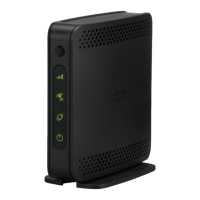
Do you have a question about the AT&T MicroCell and is the answer not in the manual?
| Device Type | Femtocell |
|---|---|
| Network Connectivity | Ethernet |
| Frequency Bands | 850 MHz, 1900 MHz |
| GPS | Yes |
| Compatible Networks | AT&T |
| Internet Connection | Broadband |
| Maximum Users | 4 simultaneous users |
| Ports | 1 x Ethernet |
| Model Numbers | DPH151, DPH153, DPH154 |
| Cellular Technology | 3G |
| Supported Devices | 3G phones |
| GPS Requirement | Required |
| Range | Up to 5000 square feet |
Explains technical workings of the MicroCell to help users with problems.
Time for a voice packet to travel over the internet; affects call quality.
Variation in packet delay; can cause audio dropouts or connection issues.
Data packets lost in transit, causing dropouts or connectivity loss.
Low internet speed affecting MicroCell voice quality and connectivity.
Requires 3G, 4G, or LTE-capable AT&T equipment and an AT&T SIM card.
Requires ISP service (not satellite/wireless broadband) with minimum speeds.
Location must be within AT&T coverage and require an active postpaid account.
Modem -> Router -> MicroCell connection; requires proximity to a window for GPS.
Modem -> MicroCell -> Router connection; used for troubleshooting by bypassing the router.
Minimum router requirements include specific ports and settings like DHCP and IPSec Pass-Through.
Explains ADSL2+ and VDSL technologies used by AT&T for internet service.
VDSL is distance-limited, uses fiber optics, and can be sensitive to line faults.
RG choice depends on VDSL type and distance from VRAD; bonded pairs may be used.
Standalone device using AT&T Mobility network for calls via corded/cordless handset.
WHP connects to MicroCell for GSM connection if cellular coverage is poor.
MicroCell requires Ethernet connection; cable type, installation, and grounding affect performance.
Maintains GPS lock for E911 services and timing packet synchronization with towers.
GPS signal requires window proximity or external antenna; address verification is key.
Unit acquires DHCP license, syncs time, DNS query, establishes IPsec VPN.
AT&T verifies physical address via online registration for service.
Explains soft and hard handovers, and how MicroCells use hard, vertical handovers.
Handoff issues arise if local tower is far away, impacting calls outside the home.
Details on processor, range, UMTS, HSPA+, and LTE frequencies used.
Information on 3G data speeds, HSPA+, and HD Voice (VoLTE) technology.
Identifies subscriber on the network; stored on SIM card, used for interconnectivity.
Unique 15-digit number identifying the device, used for registration and tracking.
Non-AT&T phones may not work if IMSI is not recognized by the MicroCell.
MicroCell is a closed system; no firmware access or modification is allowed.
Suggestions assume proper setup; success varies due to diverse LAN setups and macrocell locations.
May indicate hardware failure or update issue; power cycling or hard reset might fix.
Red or no light indicates power problem; check connections or replace adapter.
Blinking light signifies no or bad Ethernet connection; check cables and reset.
Blinking GPS light requires Power/Internet lights to be solid green first.
Indicates no connection to AT&T servers or pending activation; complete reset/activation recommended.
If MicroCell is operational, issue is likely the phone; check guest list, reset settings.
Requires deactivation by original owner; serial number tied to account.
Variable internet speed is a main cause; faster, stable speeds improve call quality.
Technical factors affecting VoIP calls and causing issues.
Stronger tower signal than MicroCell can cause issues; disabling handout might help.
Stucco houses, terrain, weather, and buildings can affect tower signal strength.
Vonage VoIP and poor router SIP ALG implementation can disrupt MicroCell traffic.
MicroCell may not work due to variables; contacting support is necessary.
Some phones have issues due to software/hardware compatibility.
Identifies error codes and suggests signal boosters as alternatives.
